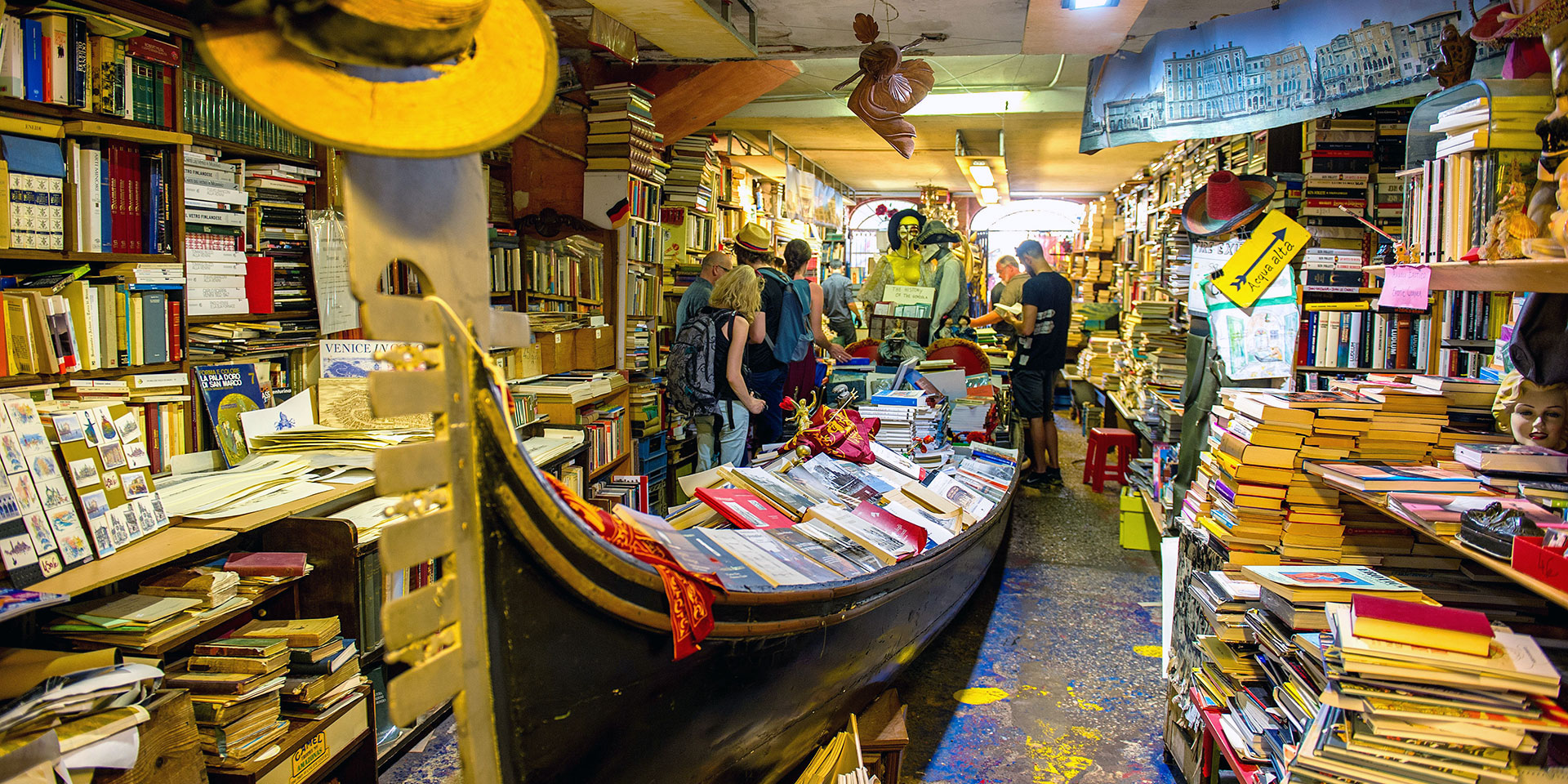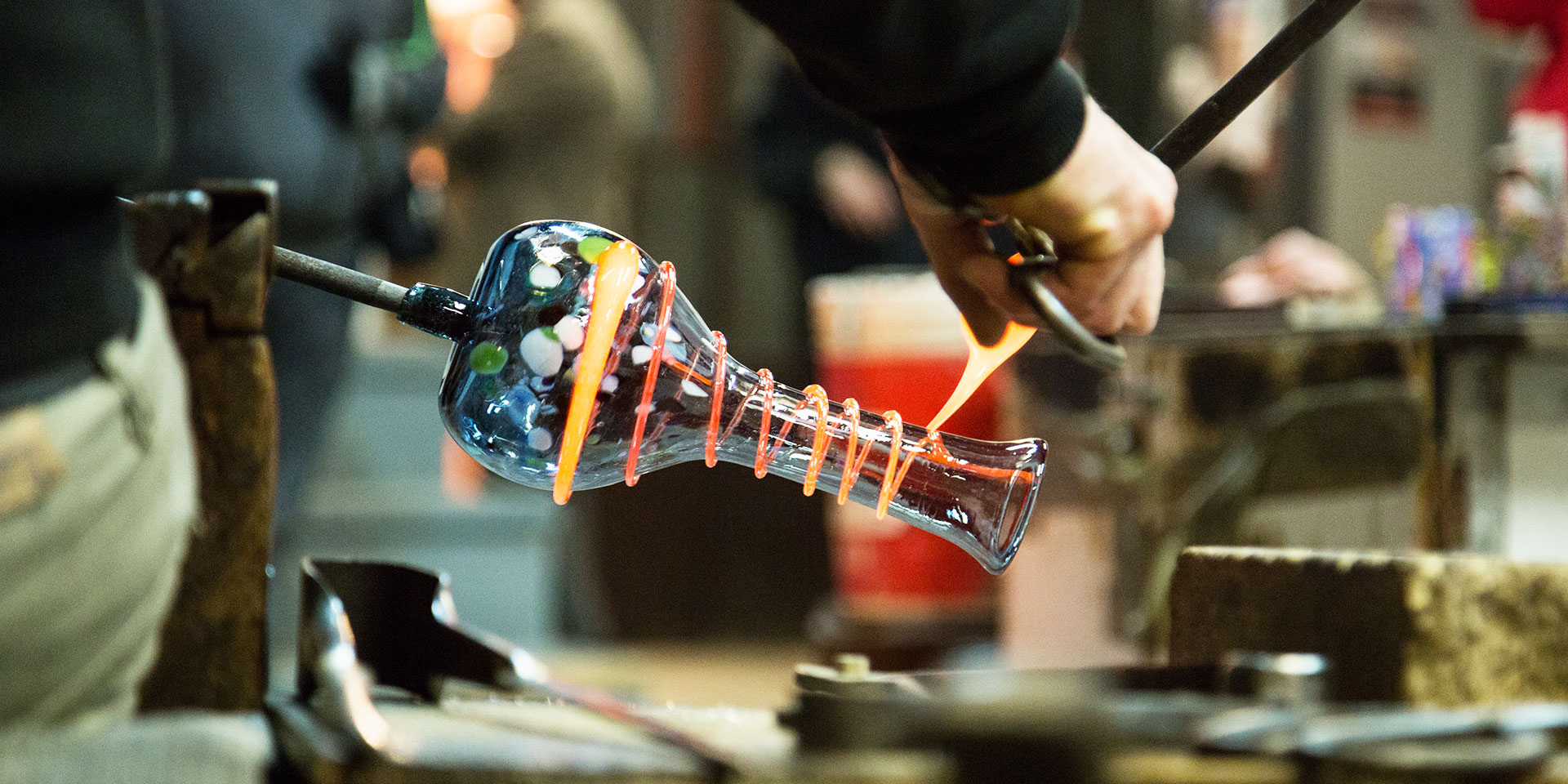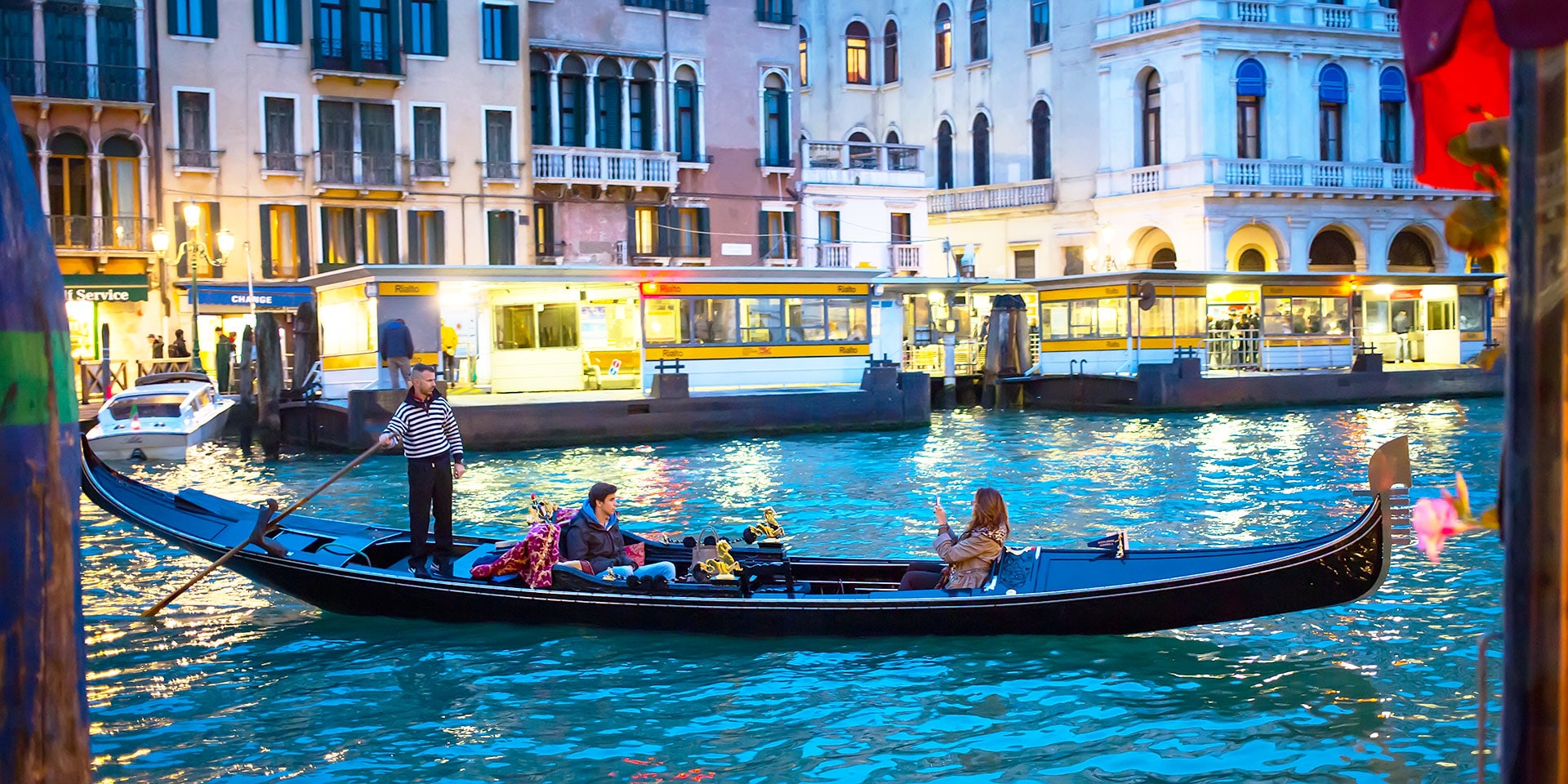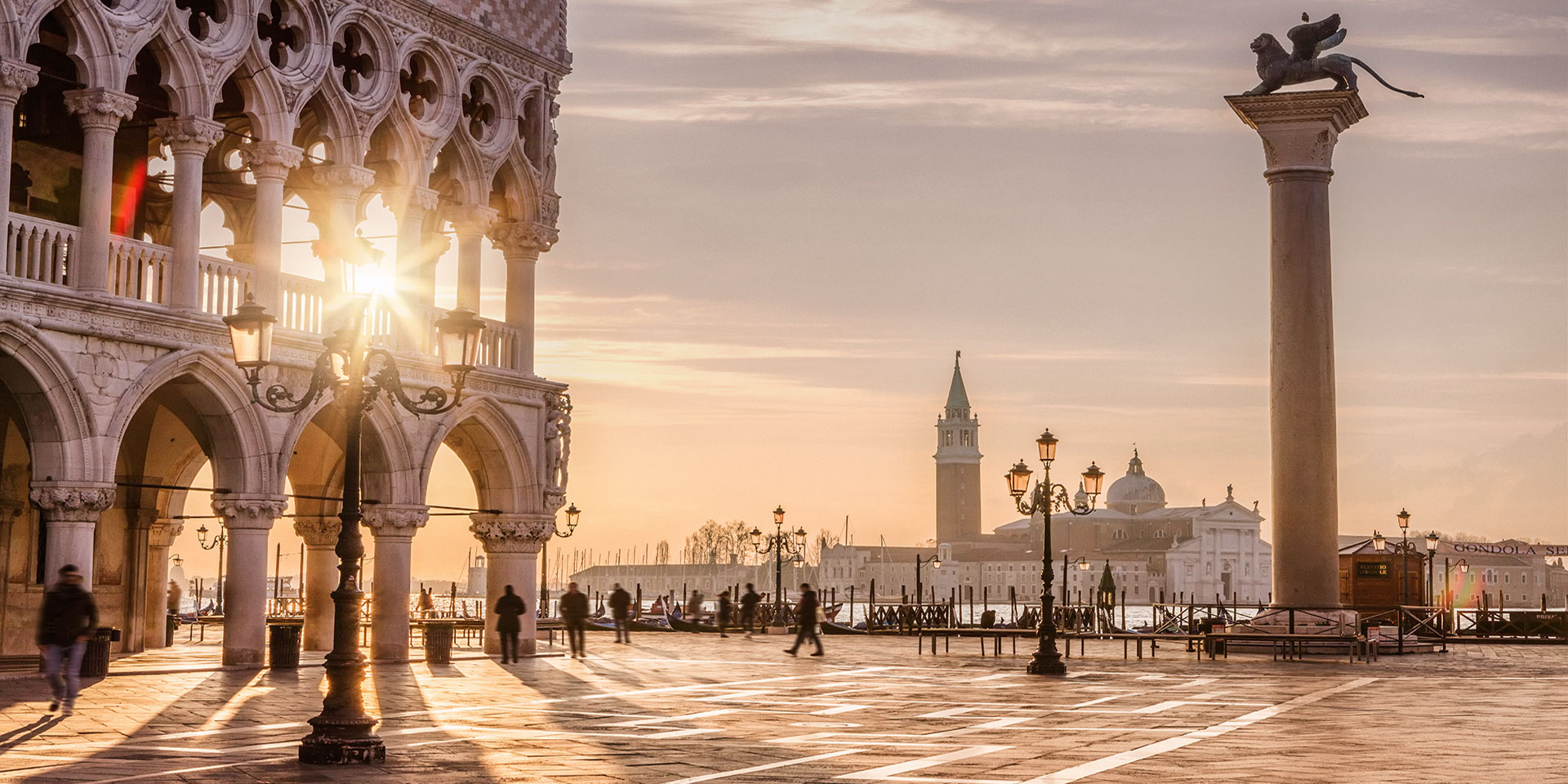Venice is magic: a floating city caught up in the waves of modernity yet resisting the undertow of about-face change; a mind-bending, misleading labyrinth that always brings you to exactly where you didn’t know you wanted to be; and an interactive time capsule that manages to place you in 21st-century Italy and the 15th-century Venetian Republic at the exact same time.
It is a beautiful contradiction and a rebellious landscape of countless canals, narrow calle (streets), romantic palaces and wide-open campi (squares) where nothing is ever what it first appears. Since it’s just as easy to fall in love with “La Serenissima” as it is to get lost, here are our top 10 things to do and see in Venice.
Stand in Piazza San Marco and Climb the Campanile
St. Mark’s Square is Venice’s iconic landmark. It’s a vast piazza lined on three sides with 15th-century palaces and the beautiful Italo-Byzantine St. Mark’s Basilica on the fourth, and just standing in the middle of the square will give you an idea of the incredible riches and power of the former Venetian Republic’s heyday.
But as any Venetian knows, viewing the city is really all about perspective. It’s not about how you stand, but where you stand.
Climb the Campanile, the 320-foot free-standing bell tower in the Piazza’s southeastern corner, possibly the city’s best perch for a bird’s-eye view of the square and surrounding islands. For a little less effort, head to the Basilica’s balcony for a center stage view into the piazza.
Pro tip: Avoid on-the-hour visits or those bell tolls will drive you out of your mind.
Behind the Scenes and Screams of the Doge’s Palace
Just behind the Campania, and facing the open waters of the Venetian Lagoon, is the Palazzo Ducale, the residence of the Doge, the chief magistrate and leader of the Republic of Venice.
For 400 years, the Doge’s Palace was the seat of Venetian government, as well as command center for all trade and commerce across the Mediterranean waters.
The palace’s Gothic exterior hides a labyrinth of rooms, from residence halls and courts to prisons and torture chambers. And this is where Casanova allegedly was held until his victorious escape.
Pro tip: Skip the queue and sign up for a private tour of the Secrets of the Doge’s Palace.
Get Lost at Libreria Acqua Alta

Considered one of, if not the, prettiest bookstores in the world, the Libreria Acqua Alta (Bookstore of High Water) is a whimsical secondhand bookshop tucked away in a back alley of Castello sestiere (district), which you can enter on foot or, more interestingly, by boat.
Its number of overstuffed rooms are stacked wall to wall with books, magazines, maps and other ephemera placed in shelves, bathtubs, bins and even a gondola.
Pro tip: You can wind your way through the Castello sestiere to get there or sneak in the back entrance — reachable by gondola — only if you take a water taxi.
Break Away to Burano

Venice is an archipelago of 118 small islands, each with its own distinct personality. If you want to avoid the throngs of tourists visiting Murano (known for its glass blowing), you’ll find that just a 40-minute water bus ride from San Marco is the city’s most colorful isle, Burano, which is known for its vibrantly hued houses — a patchwork of colors that brightens up any day and Instagram feed — as well its centuries-old traditional lace work.
Pro tip: Make like a local and head to a Burano bakery and ask for a bussolà, a donut-shaped cookie typically flavored with vanilla, rum or lemon.
Scale the Spiral Scala Contarini del Bovolo
Venice’s secrets are usually hidden in plain sight; you just have to know how to find them. Head to Palazzo Contarini, and along the way meander the side streets of Rialto, near Campo Manin. You’ll eventually arrive at an ornate palace showcasing Renaissance, Gothic and Byzantine styles, with an external tower attached to the facade, vaguely reminiscent of Pisa’s famous tower.
The elaborate arcaded tower is actually an open-air spiral staircase, or bovolo (Venetian dialect for “snail”), and after walking up the 80 steps to a domed lookout, you’ll have a private view of the rooftops of Venice.
Pro tip: Bring a camera; the bovolo is decidedly Insta-worthy.
Binge at a Bacaro
Venetians have fine-tuned snacking to an art form. Across the city are tiny bacari, typically rustic wine bars where, for a few euros, you can enjoy a glass of local wine with a taste of the owner’s cicchetti (delectable, homemade snacks) while standing at the bar.
Essentially, it’s Venice’s clever and very delicious version of wine tasting on the go. The idea is to enjoy a few glasses and taste a few snacks while catching up with friends and then move on to the next.
Pro tip: Save your appetite for Cantinone Gìa Schiavi, an 80-year-old outpost in the university-area Dorsoduro noted for incredibly creative crostini and cicchetti.
Catch up with Contemporary Art
Every two years, Venice becomes the global center of contemporary art with La Biennale di Venezia, a six-month-long art fair that takes over the Biennale Gardens and Arsenale shipyard and spills across the island with arty events.
Pro tip: Bring a great pair of shoes and plan to dedicate at least two days to art hopping.
Gondola Ride at Night

There is nothing quite like exploring Venice by water, but with daytime traffic from tourists and local deliveries, the very best time to catch a true sense of the floating city is in the evening.
Venice’s gondoliers are ubiquitous, standing at the sides of canals in their striped blue (or red) shirts, black pants and white sneakers. It’s easy to catch off-duty gondoliers looking for their next ride. Before you go, check out Gondola Venezia, which details prix fixe daytime and evening rates; gondolas can accommodate up to six people.
Pro tip: Avoid the San Marco area and look for your gondolier at Ca’Sagredo (sestiere: Cannareggio) or Campo Dei Frari (sestiere: San Polo).
Make It a Market Morning at Rialto
The Rialto market in San Polo sestiere is one of Italy’s most historic and unforgettable fish markets. Built in 1907, the neo-Gothic loggia has been shacked up with vendors selling their wares for more than a century.
Of course, time doesn’t stand still, and though Rialto remains a vibrant fish market scene, bars, restaurants and boutiques have taken residence.
Pro tip: Take a seat at the market’s canal-facing bars and enjoy an afternoon spritz.
School Yourself on Tintoretto
You can thank a 15th-century confraternity — a group of religious laymen — for funding the creation of a literal wealth of Venetian art. Scuola Grande di San Rocco, as this well-funded brotherhood is still known, commissioned La Serenissima’s favorite painter, Tintoretto, to create a masterpiece of Old Testament and New Testament scenes within their headquarters. And he did.
After 27 years in residence, Tintoretto left the buildings of the Grande Scuola in San Polo almost entirely adorned in his inimitable, monumental paintings.
Pro tip: Tintoretto also decorated the adjacent church, San Rocco.




